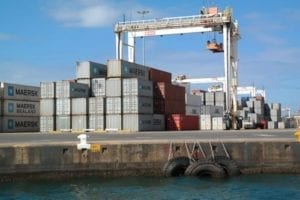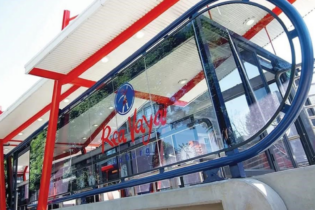Dave Watts tells Tristan Wiggill why high cube shipping containers shouldn’t be of concern to the Department of Transport.
High cube containers were developed in the United States some 30 years ago. Their market demanded the extra capacity on the trans-Pacific route for the huge volumes of imported white goods and the like. Subsequently, these containers became ubiquitous in many trades, including routes to and from South Africa. In South African terms, a high cube shipping container stands roughly 30 cm higher than a standard container. “You would think that that is the problem – but it’s not. The issue is 20 cm, because trailer fleets in this country – virtually our entire trailer fleet – are manufactured with a trailer deck height of between 1.55m and 1.6m. If you add 2.89m to that by sticking a high cube container on a trailer, you get to slightly less than 4.5m. That’s only 20 cm above the current standard restriction on vehicle load height which is 4.3m,” explains Watts. When asked about the impact this extra height has on truck stability, Watts replies, “Our technical investigations have shown that, in terms of the propensity to rollover, there is no added risk over a standard container” History supports this claim. Watts says, “We’ve been transporting high cube containers for about 20 years. We’ve had a moratorium in place on that for three and a half years. When I speak to truck fleet owners, I try to find somebody who would tell me, yes it’s a problem; we’re having rollovers because a high cube is that extra bit high. But our investigation shows this is not the case. Do these containers hit our bridges? “Once again, we’ve done some investigations and bridges do get hit now and again, as do service stations, but very rarely by containers. In fact, we know of one incident, about ten years ago, where a container got stuck under a bridge, but it didn’t actually hit the bridge.The cost of changing the portion of South Africa’s national trucking fleet that carries high cube containers would be substantial. “Container stats, provided by the National Ports Authority, indicate that 732 000 forty-foot containers moved in and out of the Durban port, last year. Durban handles about 61% of the country’s total containers, so, about 1.2 million 12 m containers were moved by road one way or the other. Of those, we think about 70% are high cubes – meaning there are roughly 850 000 high cube containers transported to and from our ports annually,” explains Watts.
“Obviously, a very large truck fleet is required to transport these, 98% of which,” he says, “measure 1.6 m and below. We don’t have a major issue, and so we question why we can’t make the changes required in the legislation to allow us to continue doing what we’ve been doing, for the last 20 years.” According to Watts, the reefer export business exclusively transports 12m high cube refrigerated containers. “That industry, last year, moved about 125 000 export boxes of reefer cargo. It’s a complex seasonal supply chain that is very marginal. We cannot have a situation where we say to the carriers: You’re going to have to change your trailer fleet because that will put further pressure on their logistics costs” While a trailer, these days, can easily cost R250 000, lowering its deck height could realistically cost R150 000 or more, per trailer. “We probably don’t have the capacity to do that in a relatively short time and we also can’t go to the pack houses, the warehouses, or the depots and say: I’m sorry, you’re going to have to lower your banks because your facilities don’t accommodate us,” argues Watts. “High cube containers are here to stay. The industry needs the Department of Transport to take note of its proposals and concerns and make rulings so that we can be ready to implement when required,” he concludes. Dave Watts is executive: customs & maritime at SAAFF







